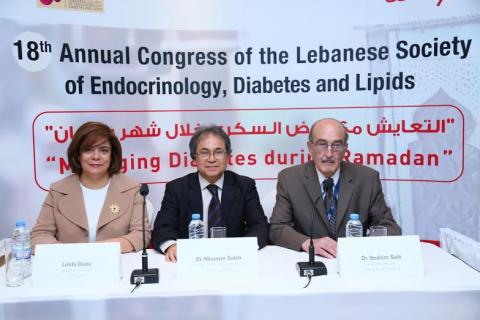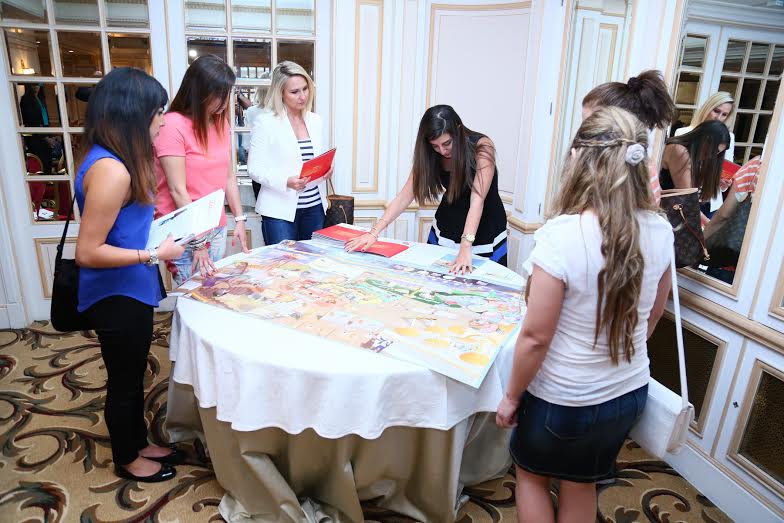
Experts gathered on the eve of the 18th annual congress of the Lebanese Society of Endocrinology, Diabetes and Lipids endorse an innovative educational tool – to help people with diabetes navigate safely through the fasting period
In advent to the holy month of Ramadan, a central religious stop for many Muslims in Lebanon and worldwide, and for the diabetic people who opt to fast during Ramadan, the Lebanese Society of Endocrinology, Diabetes & Lipids (LSEDL) has urged to intensify efforts to limit health risks during this period, by investing in more educational and awareness programs to achieve a safe fasting experience.
This call was made during an event organized on the eve of the 18th Annual Congress of the LSEDL at Le Vendome Hotel in Beirut to discuss the latest local and regional data about managing diabetes during Ramadan and new educational tools for patients.
Present at the event, Dr Ibrahim Al Salti , Head of the division of Endocrinology and Metabolism at the AUBMC explained that: “ According to the EPIDIAR Study 1 , a population-based study of diabetes and its characteristics during the fasting month of Ramadan in 13 Countries, a large percentage of people with diabetes, 43% for type 1 diabetes patients and 79% for type 2 diabetes , do fast for more than 15 days during the holy month of Ramadan” despite physicians’ recommendations not to fast.
Restraining from food and fluids during the day, and consuming a rich evening meal afterwards, is poised to create a heavy health risk on people having diabetes such as having to deal with periods of hyperglycemia and hypoglycemia whether they are living with Type 1 or Type 2 Diabetes; with those who change the dosages of their oral medications or insulin being the most vulnerable ones.
On his turn, Dr. Mounzer Saleh, President of the LSEDL emphasized that: “Fasting for people with diabetes represents an important personal decision , and should be made after a careful consideration and understanding of the associated risks and the way to manage them. Educating patients who still choose to fast despite having diabetes is key to achieve a safe Ramadan fasting experience and necessitates the availability of the right tools and resources, including time and personnel” .He recommended all patients who choose to fast during Ramadan to consult their endocrinologist to establish a pre-ramadan individual management plan”.
In this perspective, a very innovative education tool endorsed by the LSEDL , will be showcased at its 18th annual congress taking place from 12 to 14 June 2015. It is the interactive “Conversation Map” tool, developed by healthy interactions in collaboration with the International Diabetes Federation for “Managing Diabetes During Ramadan” . This map, one of a set of 8 maps designed for patient education forums around diabetes has been introduced in more than 40 countries and translated to more than 30 languages with the support of Lilly , a global healthcare leader with a strong heritage and innovation track in the diabetes field. It is a tool that encourages conversations and discussions among patients, moderated by trained certified experts by the International Diabetes Federation (IDF).
“Educating people with diabetes, their families and their caregivers is complementary to providing the right treatment and of primary importance for achieving the best outcomes for the patient ” said Linda Daou , Lilly General Manager for the Near East Area. “Lilly supports comprehensive diabetes education across the region , and is committed to provide meaningful solutions to people living with diabetes through several collaborations with the LSEDL and the other active stakeholders in the diabetes field ”.
Categories
- Log in to post comments


